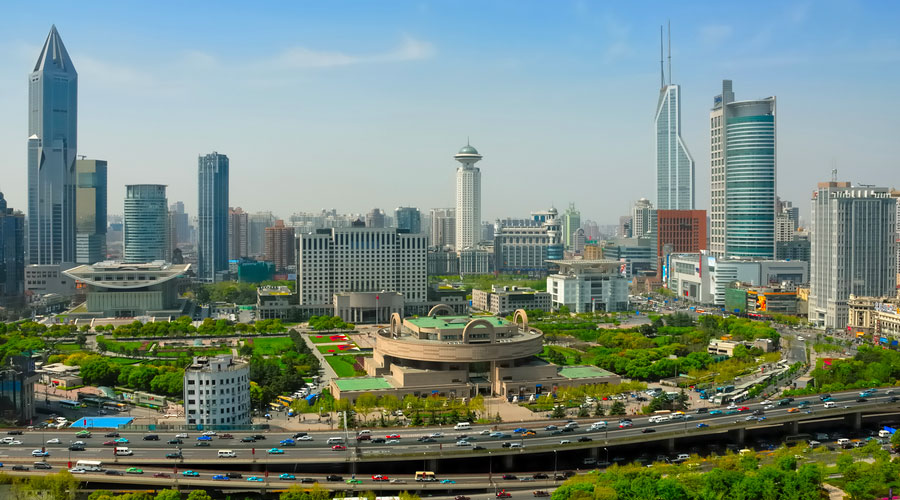Knowledge, past and beauty: the Shanghai Museum, in the heart of the city a "stargate" for the future
What holds together the past, the present and the future is time, the measure of all things, the space in which man has the freedom to act, the fil rouge that leads the fate of humanity. This is because, in order to understand the present we live in and prefigure the future that we will live, it’s absolutely necessary to know the past, all that, step after step, has brought us exactly where we are today, the great men, the small and the big conquests, myths and ancient traditions. Each place jealously guards the memories of the times they were, like we do with family heirlooms, old faded photos and recipes of grandmothers. Each place retains a distinctive character thanks to that tradition that hands down, preservess and entruts to posterity a precious legacy.

This is why it is important to take a step backwards if you really want to know a reality, a city, understand its culture and its evolution, have a full vision and live a totalizing experience. Knowledge, past and beauty are the three pillars on which the greatness of humanity has always been based, encompassing the meaning of our whole affair. Here is the reason why from museums all over the world long and intrepid queues of tourists branch off, armed with umbrellas, Canon and brochures, they are eager to binge on wonders. The same show is repeated every day in front of hundreds of museums, from the British Museum in London to the Prado in Madrid, from the Vatican Museums to the Louvre in Paris, from the Hermitage in St. Petersburg to the Shanghai Museum. It might seem little pretentious as a juxtaposition, especially in an "occidentocentric" vision, but the Eastern world has an ancient history, as old as ours, and many finds that has nothing to envy to the Riace bronzes.
So today I will take you on a journey to discover the treasures of the Pearl of the East, the largest city in all of China, whose Museum is absolutely not to be missed.
Located in the Huangpu district, the nerve center of Shanghai, it holds the milestones of Chinese history, from prehistory to imperial dynasties. The structure, designed to recall the shape of a "ding", the ancient Chinese ceremonial vase, overlooks People’s Square, the heart of the Paris of the East, which houses unique and ultramodern architectures on the theme of culture, business and tourism. It’s one of the most interesting places in this fascinating city that rejoices in its colorful reflection on the Huangpu River. The Shanghai Museum was founded in 1952 and exhibits one of the richest and most interesting art collections in the country, from the Neolithic to the last Ching dynasty: it houses bronzes, Buddhist sculptures, pottery, porcelains, paintings, calligraphy, seals, objects in jade, coins, furnishings and costumes of ethnic minorities.
The main reason of pride of this museum, with more than 120,000 cultural heritage, is undoubtedly its collection of bronze pieces, which, with more than 400 cleverly decorated specimens, gives a faithful image of the ancient China. With an overview from the 18th century BC to the 3rd century BC, the finds recount fragments of the life of the past, objects of daily life such as the bronze containers for wine, food, musical instruments, water containers, weapons and other receptacles that dates back to the Xia dynasty (21st century BC) to the Warring States Period (221 BC). The charm continues in the Stanza del Sigillo, where one has the impression of retracing the ancient Silk Road, like a sort of new Marco Polo.
The seals, more than 500 pieces, from the Zhou dynasty (1024-256 BC) to the Qin dynasty (1644-1911), provide a clear picture of what the silk represented for the ancient Cathay, in a triumph of colors, embroideries, decorations and accessories that reveal the ancient creativity and the dream of the pursuit of happiness. In addition, the rooms of the ancient ceramics and porcelain, jade, calligraphy and ancient paintings are an expression of all the delicacy, elegance and refinement of this ancient people, for whose history and ancient culture can not but respect and veneration. The visit to the Shanghai museum is a real journey through time, an effective experience, especially if we think that the "stargate" is located in the core of the modern city, including skyscrapers, pylons and structures in the Futurist style. From today, therefore, when we think of Shanghai, we will not only think of the homonymous game of chopsticks, the so-called mikado, but we will think of a city, now an international metropolis, where you can play with the centuries, poised between the past and the future, with all the emotions of a lively and in progress present.

